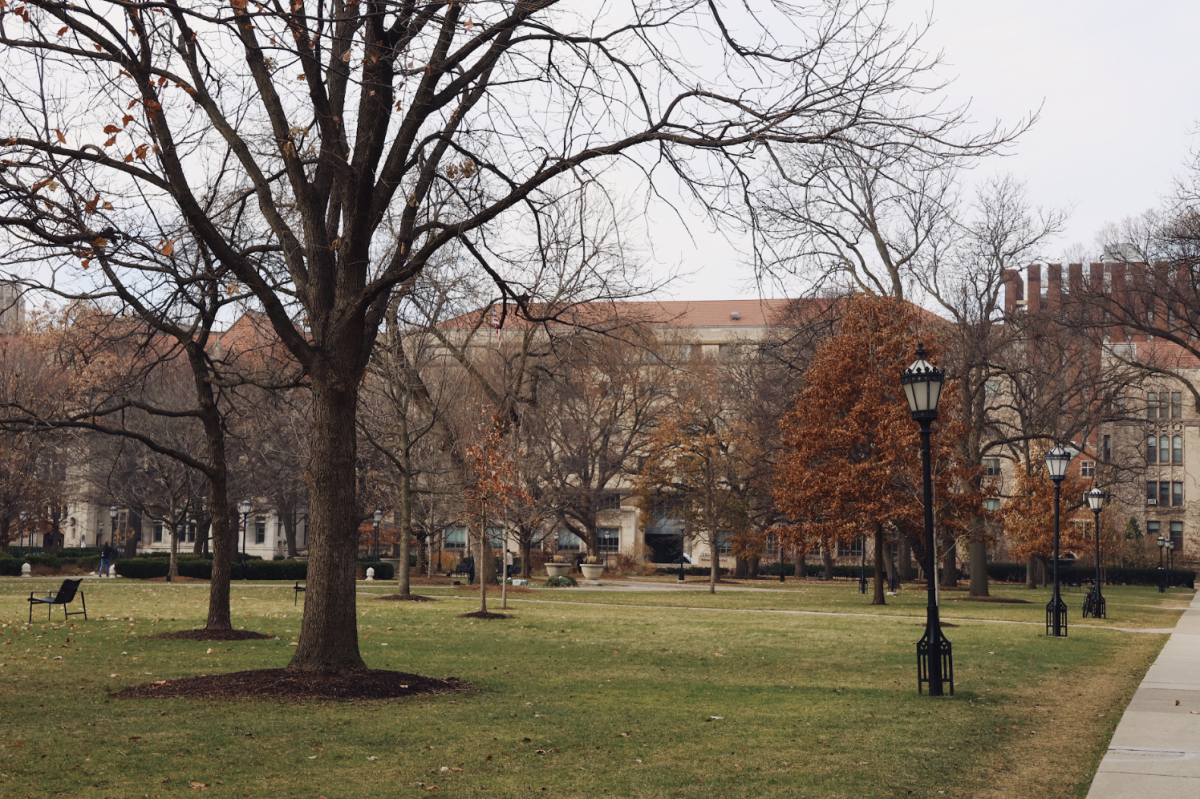Last week, many Facebook news feeds were populated by portraits of friends produced by the What I Be project, a socially engaged public art project by Steve Rosenfield that visited UChicago. According the website, the project aims to “open up the lines of communication, and to help everyone accept diversity with an open mind and heart and empower those who feel they suffer for something they may see as a flaw.” Taken by this mission and the opportunity to participate in a dialogue about identity through art, we committed 45 minutes of our week to being interviewed and photographed in the basement of Logan. While this experience of “going public” with our struggles and seeing others doing the same was certainly empowering for some who participated, we both walked away frustrated and disillusioned, feeling that the images we were able to produce in collaboration with the artist fell far short of their potential to combat stigma and create more empowering terms for conversations about identity. Though the insecurities we portrayed were different, many of our thoughts and reactions are shared.
Stigma and stereotypes are disempowering and limiting because they lead people to make an array of assumptions about another person based on a single characteristic that is seen as determinative of their whole self. They oversimplify people and are used as an excuse to bypass getting to know others as individuals. Ironically, the artistic portrayals in the What I Be photos, which aim to combat stigma, enact almost the same oversimplification, presenting the subjects solely through their insecurities and nothing more. The “imperfections” are the only things the subjects are allowed to communicate about themselves, literally written on their faces.
The entire project felt rushed and oversimplified. One of us came to the project unprepared, lacking a concise, relatable, and compelling insecurity, and the other with a number of unconventional insecurities that she was hoping to figure out how to share. But for both of us, the half hour felt like an exercise in trying to find any experience that fit these aesthetic boundaries, rather than an effort to fully portray us as people. The realizations that truly generate productive conversation about many of these disorders and insecurities are things that people won’t get upon first glance at one sentence fragment. While he said, “You can say whatever you want; the image is for you,” Rosenfield strongly stressed that he didn’t think people would understand the meaning of any statement that was not directly related to the well-established stereotypes of what feelings accompany loss and anorexia.
Having our stories manipulated by another person to condense into an aesthetically powerful four words led to a representation of ourselves that was largely inaccurate. Our stories and the stories of many others cannot be summed up in a handful of syllables. The project was limited in that it didn’t allow for the artist to work complex thoughts into simpler statements that might work within the frame of the project. This would require working outside of the frame of overgeneralized popular perception of insecurities, something the project relied on to succeed. In this way, it felt dishonest and exploitative of other people’s bad experiences in order to be consistent with an artistic mission.
There is a need to complicate the narrative. To not oversimplify. To accept that things are actually much more complicated than they appear in a couple of words written on a person’s face. Though this artistic limitation—the inability to portray someone perfectly—applies to every artistic project, this project did not just portray us incompletely, but inaccurately: a crucial distinction.
One important function of narrative social change work is to challenge people’s ability to make assumptions when confronted by representations of others. While the purely visual aspect of providing many faces for each of these struggles hints at the potential to combat these assumptions, the way the text is structured limits participants’ power to use the images to add a new story to the conversation about the insecurity that they struggle with. The end result is that the process for producing the images fairly narrowly channels people into simply restating the stigmatized words or thoughts that they hope not to be confined by. While “going public” in that way is understandably empowering for some people, it doesn’t advance the conversations about these issues.
The statements that define our relationships to our own insecurities should not be simply, “We are not [our insecurities],” but rather, “We are our insecurities and more.” Our statements said, “I am not my loss” and, “I am not my eating disorder.” However, I AM my loss and I AM my experience with anorexia. Though these parts of us do not entirely define who we are, our loss and our struggles with control have greatly shaped our interactions, existential beliefs, character, and many other facets of our being. Not acknowledging that does a disservice to our representations of ourselves. Characteristics and experiences with negative connotations are highly formative in a person’s life, and therefore denying their importance is a disservice to the complexity of identity. Denying their importance is still stigmatization, in a different form.
What we believe to be truly empowering is saying who we are and who we’ve become out of those experiences. Saying, “I am not my loss” doesn’t do much for me, but saying, “I am brave and resilient” means much more. But how can I embody the strength that came out of an experience if I am denying that importance of the experience in the first place? The most powerful and honest version of myself,and the one I want to present is the one who holds all of these different but connected pieces inside her.
Rather than feeling like we had peeled back some layers of ourselves and let people see some aspect that was previously hidden, we felt much more like we had gained a mask that instead obscured and flattened the “us” that people saw.
For a few days after the posting of my “I am not my eating disorder photo,” I got lots of pats on the back from acquaintances telling me I was brave and that they support me just the same despite my struggle to be “healthy” in that respect. However, conversations about my experience in which I can talk about how this aspect of myself that I actively struggle with is also the source of many other parts of myself that are central to my thriving and my passions are far more useful in facilitating growth, comfort, and resilience. There may be times when people do need those pats on the back as support in what feels at the moment like an isolating struggle, but for me, strength comes not from being able to have people tell me “it’s all OK,” but instead from having them be willing to listen while I talk about the complexities of my anorexia—the underlying thought processes and transformative elements of the experience that structure who I am as a person.
The potential power of the project, as is true for socially engaged art as a category, is to use the artist’s mastery of aesthetics and medium specificity to communicate messages in a way that is more powerful, impactful, enticing, and effective at drawing the audience in than other presentations of the same information. As the project currently stands, there is some room for that in the longer “personal statements” that participants can submit to explain their photos after the fact. However, these are not integrated into the photos in a way that viewers can effectively engage with, nor are the viewers motivated by the photos’ format to do so, since participants are encouraged to make the meaning of their image entirely transparent on its own. Having only this additive component that can be tacked on as a place for the information that the participant actually wants to contribute left us both feeling misrepresented. We felt we were not allowed to create a narrative that would complicate the conversation in ways that parallel the multifaceted and untethered identities that we hope to empower people to build, aiming to show the diverse and complex ways that those characteristics play out for different individuals, not just restating the characteristics themselves.
Kiran Misra is a second-year in the College majoring in public policy and comparative human development. Jeanne Lieberman is a third-year majoring in Law, Letters and Society.









